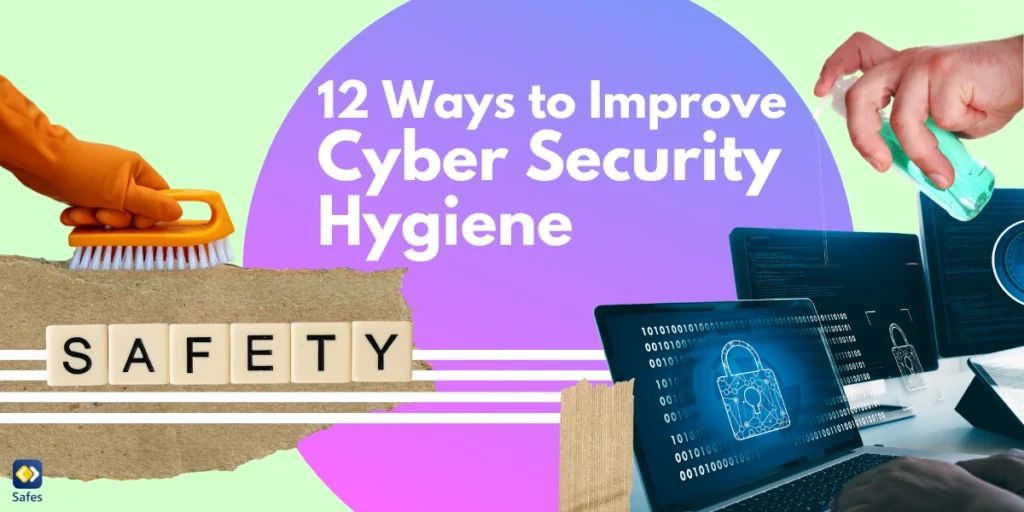In a world where screens dominate daily life, protecting your family online is as vital as locking your front door at night. The rise of cyber threats, scams, and harmful content means parents must actively build digital defenses. Cybersecurity hygiene equips families with tools to stay safe in an ever-connected world.
Download and Start Your Free Trial of the Safes Parental Control App
The internet offers endless opportunities but also harbors risks that can compromise privacy and security. From identity theft to exposure to harmful content, online dangers are real. Embracing smart digital habits ensures your family can enjoy technology without falling victim to these threats, turning awareness into proactive protection.
Good cybersecurity practices begin with parents modeling smart habits and teaching their children to follow suit. Training provides practical techniques for password management, data protection, and safe browsing habits. These strategies reduce risks and empower families to navigate the digital world confidently and securely.
Why Cybersecurity Hygiene Matters
Cybersecurity hygiene refers to the habits and measures individuals take to protect themselves online. For families, this means safeguarding devices, personal data, and the online well-being of their children. Poor online habits can lead to issues like:
- Identity theft
- Exposure to harmful content
- Cyberbullying
- Financial fraud
- Data breaches
Examples include regularly updating passwords, enabling two-factor authentication, and using parental controls to monitor activity. As parents, you play a crucial role in teaching your children how to navigate the internet safely. Building a secure digital environment begins with modeling these habits through training and ongoing awareness.
Developing strong cybersecurity habits also means understanding the broader implications of online risks. Beyond personal safety, breaches can affect family finances, reputations, and even mental well-being. Cybersecurity awareness helps families foster resilience against emerging digital threats by emphasizing education and consistent practice.
Cybersecurity hygiene examples include the follwoing practices.
1. Start with the Basics: Password Management
A strong password is the first line of defense against cyber threats. Follow these guidelines to create secure passwords:
- Use a combination of uppercase and lowercase letters, numbers, and symbols.
- Avoid using easily guessable information like names, birthdates, or “12345.”
- Create unique passwords for each account or service.
Using a password manager simplifies the process by generating and storing complex passwords securely. Effective password management is a foundational element in ensuring parents and children understand the importance of safeguarding accounts.
Consider revising passwords regularly and auditing accounts for any suspicious activity. Incorporating multi-word passphrases can add an extra layer of complexity while remaining memorable. Teaching children to avoid sharing passwords, even with friends, reinforces boundaries and helps them build independence in managing their accounts.
2. Use Two-Factor Authentication (2FA)
Two-factor authentication adds an extra layer of protection by requiring a second form of verification in addition to a password. Many popular apps and services, such as Gmail, Facebook, and banking platforms, offer 2FA. Make it a family habit to:
- Enable 2FA whenever available.
- Use text messages, email codes, or authentication apps for added security.
- Teach children the importance of verifying their identity during logins.
Additionally, demonstrate how to recover accounts securely in case access is lost. Establishing secure backup methods and recovery codes ensures you won’t be locked out unexpectedly, reinforcing your family’s preparedness for unforeseen events.
3. Keep Devices and Software Updated
Cybercriminals often exploit outdated software to access devices and data. Regular updates to operating systems, apps, and antivirus software ensure your family’s devices remain protected against the latest threats. Follow these steps:
- Turn on automatic updates for devices and apps.
- Schedule updates for antivirus programs.
- Review software permissions and uninstall unused apps.
Encourage regular scans for malware and viruses to maintain device integrity. Explain the importance of only downloading apps and software from trusted sources, reducing the risk of introducing vulnerabilities into your system.
4. Educate Your Children About Online Privacy
Children may not understand the importance of keeping personal information private. Teach them social media privacy tips to avoid sharing:
- Their full name
- Address or location
- Phone numbers
- School details
- Photos that reveal personal information
Use online resources to explain privacy risks in age-appropriate ways. Practice safe sharing habits on social media and turn off location tracking. Highlight examples of real-world scenarios where oversharing led to issues, helping children grasp the importance of discretion.

5. Set Up Parental Controls
Parental control apps are essential tools for modern parents. They help monitor and manage children’s online activities. Use these features to:
- Block inappropriate content.
- Set screen time limits.
- Monitor social media usage.
- Track device locations.
Parental controls work best when combined with open communication about why they are necessary and how they contribute to a safe online environment. Explain how filters and alerts operate to protect them rather than limit their freedom.
6. Teach Children to Recognize Online Threats
Cyber threats can appear in many forms, including phishing emails, malicious links, and fake websites. Your cybersecurity hygiene training should teach your children to:
- Avoid clicking on suspicious links or popups.
- Verify the legitimacy of websites.
- Be cautious of free downloads or apps from unverified sources.
- Never open attachments from unknown senders.
Practicing scenarios where they encounter these threats can make training memorable and reinforce responses under pressure.
7. Foster Open Communication
Your children should feel comfortable coming to you with concerns or questions about their online experiences. Building a foundation of trust and openness ensures they are more likely to approach you when encountering issues online. Open communication involves regular discussions, reinforcing positive behaviors, and being available to listen without judgment.
Create an open dialogue by:
Asking about their favorite apps and games to understand their digital interests.
- Discussing the risks of online interactions with strangers and encouraging skepticism about unknown contacts.
- Encouraging them to report any cyberbullying, inappropriate content, or uncomfortable situations without fear of punishment.
- Setting aside time for weekly conversations about their online habits and experiences, reinforcing awareness and responsibility.
- Role-playing different scenarios to teach them how to respond to suspicious messages, requests for personal information, or cyberbullying incidents.
- Reassuring them that mistakes, such as accidentally sharing personal information, can be fixed with quick action rather than blame.
Let them know you are always available to discuss concerns and praise their good decisions online. Highlight positive stories of others who navigated online challenges successfully to inspire. Foster curiosity about online safety topics and explore tools together that promote security.
8. Secure Your Home Network
Your home WiFi is the gateway to your family’s digital life, making it a critical component of cybersecurity. One of your cyber hygiene practices should be securing your network as it reduces vulnerabilities and provides peace of mind. Protect it with these tips:
- Use a strong password for your WiFi network to prevent unauthorized access.
- Change the default name and password of your router to avoid vulnerabilities associated with factory settings.
- Enable WPA3 encryption if supported to strengthen security against hackers and ensure data privacy.
- Create a separate guest network for visitors to prevent access to your main network and limit exposure to potential threats.
- Regularly update router firmware to patch security vulnerabilities and improve performance.
- Disable remote management features unless absolutely necessary to reduce entry points for attackers.
- Turn off WiFi Protected Setup (WPS) if not in use, as it can be an easy target for hackers.
- Monitor connected devices regularly and remove any unknown or untrusted connections immediately.
For additional protection, consider installing a firewall or network monitoring tools to detect suspicious activity. Educate your family about using a virtual private network (VPN) for secure connections, especially when accessing public WiFi. These strategies collectively ensure your family’s digital life remains private and protected.
9. Be a Role Model
Children often emulate their parents’ behavior, so practicing good cybersecurity habits yourself and showing the importance of cyber hygiene set a powerful example. Demonstrating responsible online behavior helps reinforce the importance of safe practices.
Show responsibility by:
- Limiting your own screen time to encourage balanced digital habits.
- Being cautious about the information you share online to model data protection.
- Avoiding unsafe websites or questionable apps to minimize risks.
- Demonstrating safe online shopping practices, such as checking website security (https) and avoiding sharing unnecessary details.
- Using strong, unique passwords and enabling two-factor authentication on all accounts to emphasize consistent protection.
- Logging out of accounts when not in use and avoiding auto-login features, which can be risky.
- Showing respect for others online by avoiding negative comments, which models healthy digital citizenship.
Involve your children in your own cybersecurity routines, such as updating passwords or reviewing app permissions. When they see you prioritize security, they are more likely to do the same.
10. Stay Informed About Emerging Threats
The digital landscape is constantly evolving, with new threats emerging regularly. Staying informed allows you to adjust strategies and tools to match modern challenges. Knowledge empowers families to stay proactive and resilient against changing risks.
Stay up-to-date by:
- Following trusted cybersecurity blogs, newsletters, and podcasts for insights into new threats and solutions.
- Attending workshops or webinars on internet safety to gain expert advice and practical tips.
- Reviewing updates and features of parental control tools to ensure their continued effectiveness.
- Subscribing to cybersecurity alerts from organizations like Cybersecurity and Infrastructure Security Agency (CISA) or local government resources.
- Testing new tools and apps before allowing children to use them, ensuring compatibility with security measures.
Encourage your children to share any unusual online experiences, even those that seem minor. By staying informed, you can adjust security settings and reinforce family habits that protect against emerging threats.

11. Limit Social Media Exposure
Social media can expose children to harmful content, cyberbullying, and privacy risks. Promote safety by:
- Setting age-appropriate boundaries for social media use to ensure safe interactions.
- Monitoring their friends and followers lists to prevent connections with strangers.
- Encouraging private profiles to limit exposure and protect personal data.
- Teaching them to avoid oversharing, especially details about locations, routines, or school information.
- Explaining the risks of accepting friend requests from unknown people and clicking on suspicious links or offers.
Reinforce the importance of pausing before posting and discussing how online actions can have long-term consequences. Regularly review privacy settings and update them as needed to maintain protection.
12. Emphasize Critical Thinking
Teach your children to think critically about the content they encounter online, making it an essential part of cybersecurity practices. Focus on:
- Questioning the credibility of information before accepting it as fact.
- Identifying fake news or manipulated media to avoid misinformation.
- Recognizing the motives behind ads and promotions to develop media literacy.
- Encouraging them to cross-check facts using reliable sources before sharing or believing information.
- Teaching them to recognize emotional manipulation tactics often used in scams.
By fostering critical thinking, you empower children to make smarter decisions online and develop resilience against misinformation and online manipulation.
Safes: Your Trusted Digital Ally
Parental control apps are essential tools for enhancing cybersecurity hygiene within families. They empower parents to monitor and manage their children’s online activities, ensuring safe and responsible internet use. Our product, Safes, offers comprehensive features such as screen time management, content filtering, and real-time location tracking, all designed to protect your child’s digital experience.
We invite you to try Safes with our free trial, available for download on both iOS and Android platforms. Experience firsthand how Safes can help you maintain a secure online environment for your family.
Conclusion
Maintaining cyber security hygiene is an ongoing effort, but it’s one of the most valuable lessons you can impart to your children. By adopting these practices, you create a safer online environment for your family and empower your children to become responsible digital citizens.
As a parent, you don’t need to be a cybersecurity expert. Small, consistent steps can make a big difference in protecting your loved ones. With your parental control app and these tips, you’re well on your way to building a secure digital foundation for your family.
Your Child’s Online Safety Starts Here
Every parent today needs a solution to manage screen time and keep their child safe online.
Without the right tools, digital risks and excessive screen time can impact children's well-being. Safes helps parents set healthy boundaries, monitor activity, and protect kids from online dangers—all with an easy-to-use app.
Take control of your child’s digital world. Learn more about Safes or download the app to start your free trial today!




